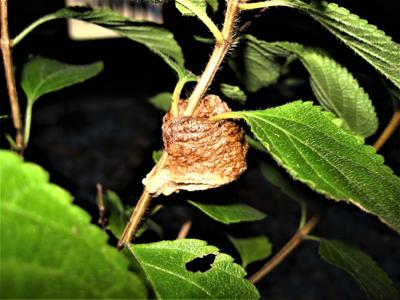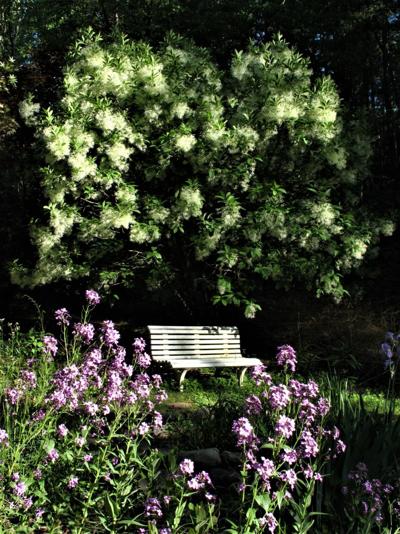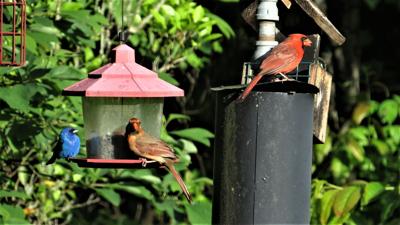Daily News-Record, August 6, 2022

One afternoon as I was looking around my little manmade pond, a Green Frog jumped straight up out of the water right in front of me. It rose to a height of about four feet, snatched an insect that had landed on a tall water plant, and dropped back into the pond. It happened so suddenly and so fast that I almost thought I had imagined it! Because I was standing in the right place at the right time, I got to see one of the ways in which a Green Frog feeds.
Although the breeding season for these animals is coming to a close, you may still hear the males calling occasionally throughout the month. Listen for the sound of a plucked, deeply pitched, banjo string. Males and females also make a very high-pitched squeak as they jump into water if they’re startled.
A calling male can attract a female this late in the summer even though she probably mated earlier in the year. Females usually lay a clutch of eggs twice during mating season, making full use of our warmest months to reproduce.
It’s easy to tell the gender of a Green Frog. Females always have a white throat, while sexually active males have a remarkably bright-yellow throat. In spring and fall, a male’s throat is much paler.
Another way to tell the sexes apart is to compare the size of a Green Frog’s eardrum with the size of its eyes. A circular eardrum is located on either side of a frog’s head and is usually referred to as a “tympanum” (TIM-pan-um). Male Green Frogs have eardrums that are bigger than their eyes and femaleshave eardrums that are about the same size as their eyes.
A male will start calling by May to advertise his territory to any females within hearing distance. I live near a stream, and that is undoubtedly where the females come from. Females do not otherwise remain in the company of a resident breeding male.
However, many smaller males that do not have the ability yet to defend their own territories may reside within the territory of the dominant male frog. You can often see these frogs (known as “satellite” males) floating in the water with their noses and eyes protruding from the water surface.
Green Frog eggs are tiny, dark brown, and enveloped in a clear gooey film. They float on the surface of the water, but only briefly before sinking out of sight. If they don’t get eaten, the eggs will hatch within a week. The tiny tadpoles from an August mating will not transform into frogs until the following spring or early summer.
If you maintain an artificial pond with frogs and tadpoles, don’t clean out the muck that’s accumulated at the bottom of your pond by fall, as recommended by garden centers. Adults and young (as well as many other aquatic animals) hibernate in this organic material when the water temperature becomes too cold for them to remain active.
Marlene A. Condon is the author/photographer of The Nature-friendly Garden: Creating a Backyard Haven for Plants, Wildlife, and People (Stackpole Books; information at www.marlenecondon.com). You can read her blog at https://InDefenseofNature.blogspot.com









